40 understanding nutrition facts on food labels
Nutrition Facts and Food Labels - Academy of Nutrition and Dietetics While food choices are important, there's increasing evidence that many of us are drinking our way to weight problems, too. Understanding Egg Labels Today, you can choose between brown and white, free-range and cage-free, organic and non-organic eggs. How to Read Nutrition Facts Labels the Right Way - GoodRx Nutrition Facts labels are required to list the total fat, saturated fat, and trans fats on packaged food products. It's important to choose foods with the right kinds of fats. Here are the differences between the fats you'll see on the label. Bad fats Saturated and trans fats are the less healthy types of fats.
Food labels 101: Understanding the nutrition facts panel The guideline is that five percent or less is low in a nutrient and 20 percent or more is high. For example, if a nutrition facts panel says that the %DV for calcium is 20 percent and iron is four percent, then you know that the food item is high in calcium but low in iron. Note: There is no %DV for sugars, trans fat and protein.
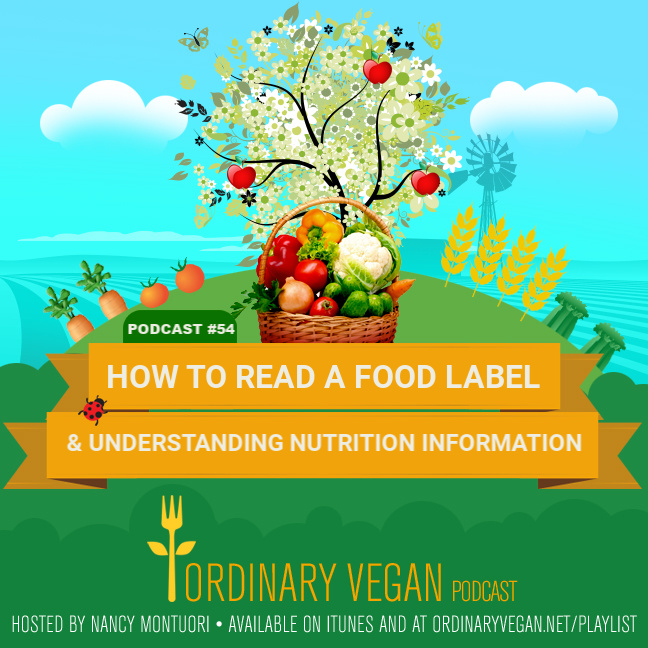
Understanding nutrition facts on food labels
Reading and understanding the Nutrition Facts Label for health The Nutrition Facts Label is making changes that will be required by all manufacturers by Jan. 1, 2020; however, the majority of labels already adhere to these changes. Nutrition Facts Labels include nutrients we should limit such as fat, saturated fat, trans fats, cholesterol, sodium and added sugar. They also list nutrients important to ... Understanding Food Labels - The Nutrition Source Understanding Food Labels The Nutrition Facts Label. The Nutrition Facts label is overseen by the U.S. Food and Drug Administration (FDA) and was... Front-of-Package. This is the section of a food label consumers see first, which within seconds can influence their... Side and Back-of-Package. The ... Food Labels 101: Understanding the Nutrition Facts Label A sodium level of 140 mg or less on the nutrition facts label is considered low sodium. This is an essential number to look for when reading the label. Total Carbohydrates - Fiber and Sugar Foods high in fiber can be beneficial to a healthy diet, as fiber helps manage blood sugar levels and can lower cholesterol.
Understanding nutrition facts on food labels. Use the Nutrition Facts Label - National Institutes of Health When using the Nutrition Facts label as a guide, try these tips: Keep these low: saturated fats, trans fats, cholesterol, and sodium. Get enough of these: potassium, fiber, vitamins A and C, calcium, and iron. Use the Percent Daily Value (% DV) column when possible; 5% DV or less is low, 20% DV or more is high. Visit the Smart Food Shopping ... Understanding Nutrition Facts on Food Labels - WebMD Let's look at what these terms mean: Cholesterol is found mainly in meat, poultry, fish, and dairy products. The 2020 Dietary Guidelines no longer recommend... Saturated fat comes primarily from foods of animal origin such as dairy products, meat, butter, cheeses, poultry, and... Trans fats are ... How to Understand and Use the Nutrition Facts Label | FDA - U.S. Food ... How to Understand and Use the Nutrition Facts Label 1. Serving Information. When looking at the Nutrition Facts label, first take a look at the number of servings in the... 2. Calories. Calories provide a measure of how much energy you get from a serving of this food. In the example, there... 3. ... Get the Facts! Steps to Reading and Understanding Nutrition Facts Labels Steps to Reading and Understanding Nutrition Facts Labels (FN1404, Reviewed Feb. 2022) Publication File: FN1404 You can make quick, informed decisions about foods by following these steps to reading Nutrition Facts labels on food packages. Lead Author: Julie Garden-Robinson, Ph.D., R.D., L.R.D., Food and Nutrition Specialist
Food Labels | CDC - Centers for Disease Control and Prevention Food Labels Check the Serving size first. All the numbers on this label are for a 2/3-cup serving. This package has 8 servings. If you eat the whole thing, you are eating 8 times the amount of calories, carbs, fat, etc. Total Carbohydrate shows you types of carbs in the food, including sugar and ... How To Understand Nutrition Facts Labels: A Guide To Food Labels The first thing you should know about nutrition label basics is that the top portion of food labels usually contain information that is specific to the product itself. This information is often about the correct serving size, caloric content, and the actual information about nutrients. The New Nutrition Facts Label | FDA - U.S. Food and Drug Administration The U.S. Food and Drug Administration (FDA) has updated the Nutrition Facts label on packaged foods and drinks. FDA is requiring changes to the Nutrition Facts label based on updated scientific... Understanding Food Nutrition Labels | American Heart Association Here are more tips for getting as much health information as possible from the Nutrition Facts label: Remember that the information shown in the label is based on a diet of 2,000 calories a day. You may need less or more... When the Nutrition Facts label says a food contains "0 g" of trans fat, but ...
US Consumers' Understanding of Nutrition Labels in 2013: The Importance ... We examined critical aspects of nutrition label understanding: whether people could calculate ... Understanding Food Nutrition Labels - Calorie Control Council Understanding Food Nutrition Labels. No matter your health status, understanding what that Nutrition Facts label is really telling you is critical to knowing if the product in your hand is right for you.. When looking at this label many people will only look at one piece of information. For example, some people only look at total carbohydrates ... Understanding Food Nutrition Labels | Go Red for Women 5 - Understand % Daily Value. The % Daily Value (DV) tells you the percentage of each nutrient in a single serving, in terms of the daily recommended amount. If you want to consume less of a nutrient (such as saturated fat or sodium), choose foods with a lower % DV (5 percent or less). If you want to consume more of a nutrient (such as fiber ... Understanding the Nutrition Facts Label The Food and Drug Administration (FDA) required Nutrition Facts label provides you with important information that applies to one serving of the food/product, the amount of nutrients found in the food/product, and the percentage of the recommended total for a 2,000 calorie diet.
How To Read Food and Beverage Labels - National Institute on Aging Or you can call the U.S. Department of Agriculture's Food and Nutrition Information Center at 301-504-5414. Understanding percent Daily Value (% DV) The percent Daily Value (% DV) tells how much a nutrient in a serving of the food or beverage contributes to a total daily 2,000-calorie diet.
Understanding food labels - Canada.ca Nutrients About nutrients, fats, vitamins on nutrition facts table, on packaged foods. Nutrient content claims Meaning of fat-free, no added sugar, low sodium, other nutrient content claims. Percent daily value How to calculate % daily value on a nutrition facts table, how to use % daily value. About food labels
Understanding Food Nutrition Labels | EmPOWERED To Serve The U.S. Food and Drug Administration (FDA) regulates the Nutrition Facts label seen on packaged foods and drinks. In 2016, the FDA released changes to the label to make it easier to see how many calories and added sugars are in a product and to make serving sizes more realistic. These changes are still being implemented throughout the food ...
The Basics of the Nutrition Facts Label - Academy of Nutrition and ... Aim high in vitamins, minerals and dietary fiber. Step 4: Check Out the Nutrition Terms Low calorie: 40 calories or less per serving. Low cholesterol: 20 milligrams or less and 2 grams or less of saturated fat per serving. Reduced: At least 25% less of the specified nutrient or calories than the usual product.
How To Read Food Labels: Understanding the Basics - Instacart The nutrition facts table is usually found on the rear or the side of the label. This is perhaps the most useful part of a food label, providing a detailed breakdown of the product's nutritional content, including calories, protein, carbohydrates, fat, and more. 1. Beware of misleading claims
Understanding Food Nutrition Labels - American Heart Association Here are more tips for getting as much health information as possible from the Nutrition Facts label: Remember that the information shown in the label is based on a diet of 2,000 calories a day. You may need less or more... When the Nutrition Facts label says a food contains "0 g" of trans fat, but ...
Understanding Food Labels - Nutrition: Science and Everyday Application ... The FDA uses the following definitions for interpreting the %DV on food labels:4 5%DV or less means the food is low in a nutrient. 10% to 19%DV means the food is a "good source" of a nutrient. 20%DV or greater means the food is high in a nutrient.
Food Labeling 101: Understanding the Nutrition Facts Label The ingredient list is the last section of the Nutrition Facts label, but certainly not least, as some may say it's the most important. Here you'll find a list of the ingredients in the product....
Understanding Ingredients on Food Labels - Professional Heart Daily ... Understanding Ingredients on Food Labels. Food labels are an important source of information about calories and the nutritional value of the foods you eat, a crucial tool in building a heart-healthy diet. The Nutrition Facts information is always displayed in the same orderly fashion and helps you understand how much of certain nutrients that ...
Nutrition Facts: How to Read Nutrition Labels - bodyandsoulau Common nutrition terms to know. The Food and Drug Administration (FDA) regulates terms used on food labels. Here are some to look for: Calorie-free: Less than 5 calories per serving. Low calorie ...
Food Labels 101: Understanding the Nutrition Facts Label A sodium level of 140 mg or less on the nutrition facts label is considered low sodium. This is an essential number to look for when reading the label. Total Carbohydrates - Fiber and Sugar Foods high in fiber can be beneficial to a healthy diet, as fiber helps manage blood sugar levels and can lower cholesterol.
Understanding Food Labels - The Nutrition Source Understanding Food Labels The Nutrition Facts Label. The Nutrition Facts label is overseen by the U.S. Food and Drug Administration (FDA) and was... Front-of-Package. This is the section of a food label consumers see first, which within seconds can influence their... Side and Back-of-Package. The ...
Reading and understanding the Nutrition Facts Label for health The Nutrition Facts Label is making changes that will be required by all manufacturers by Jan. 1, 2020; however, the majority of labels already adhere to these changes. Nutrition Facts Labels include nutrients we should limit such as fat, saturated fat, trans fats, cholesterol, sodium and added sugar. They also list nutrients important to ...



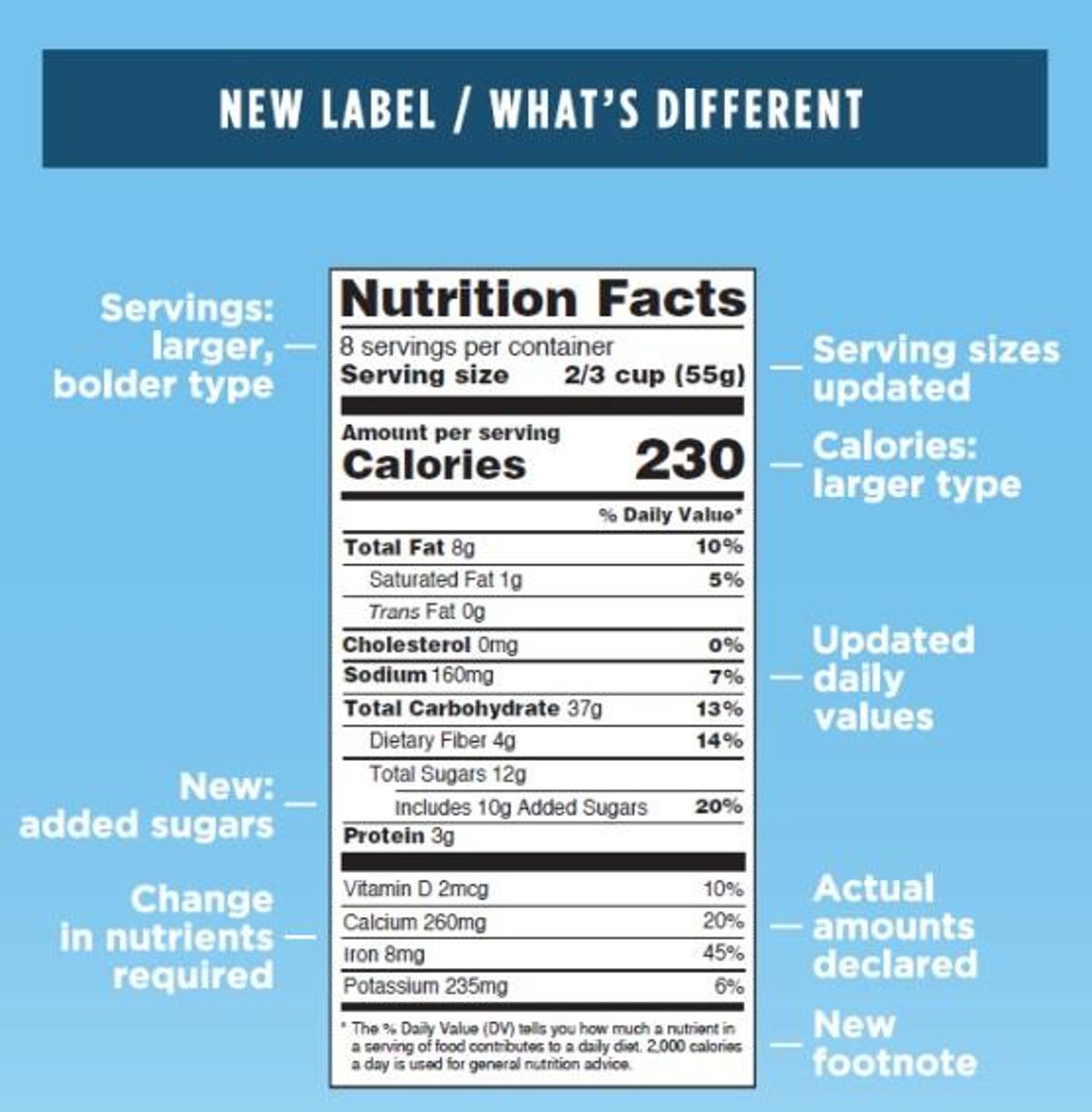

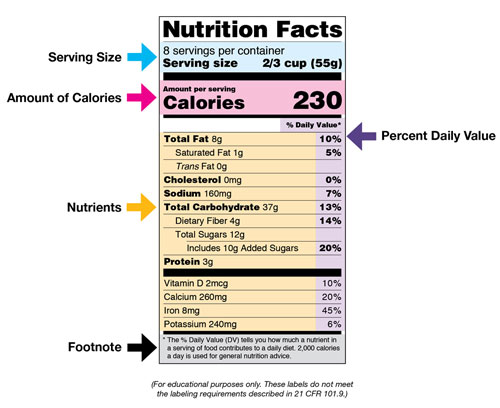







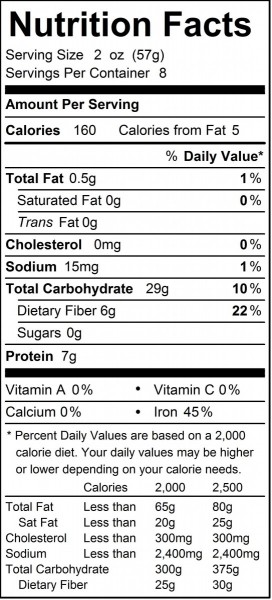

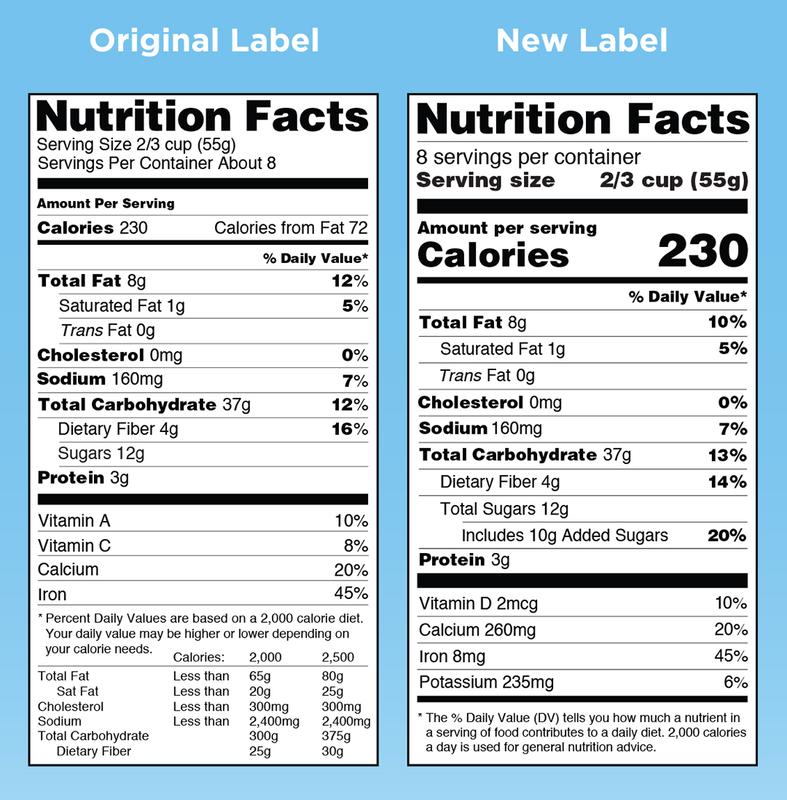


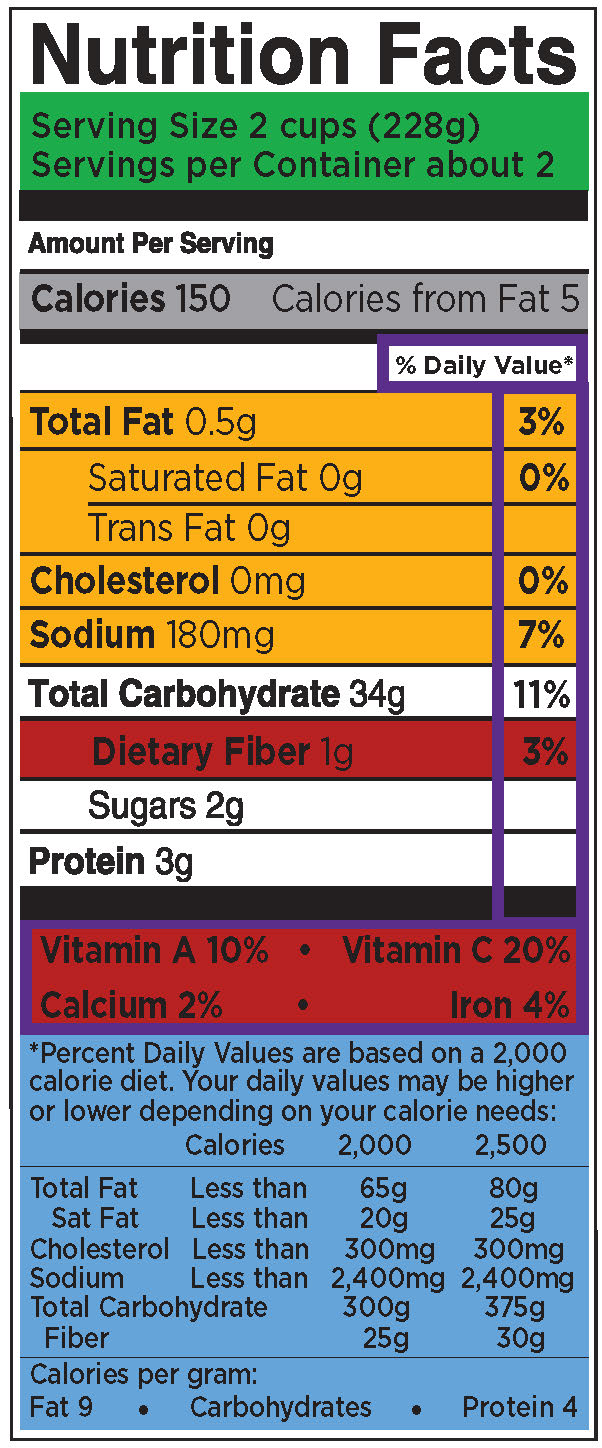
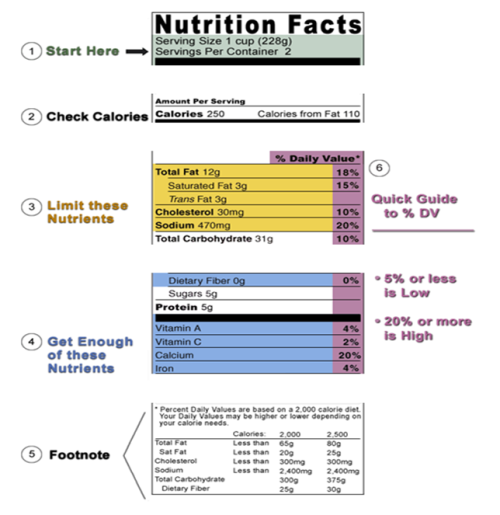









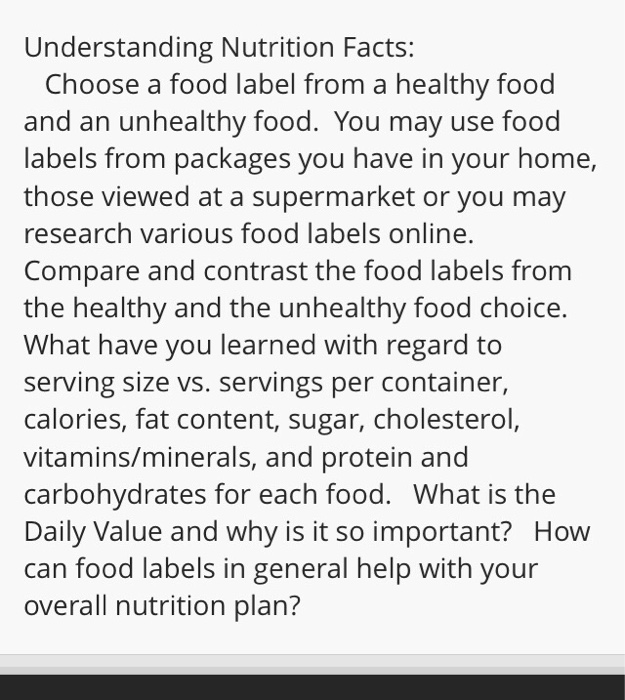





Post a Comment for "40 understanding nutrition facts on food labels"